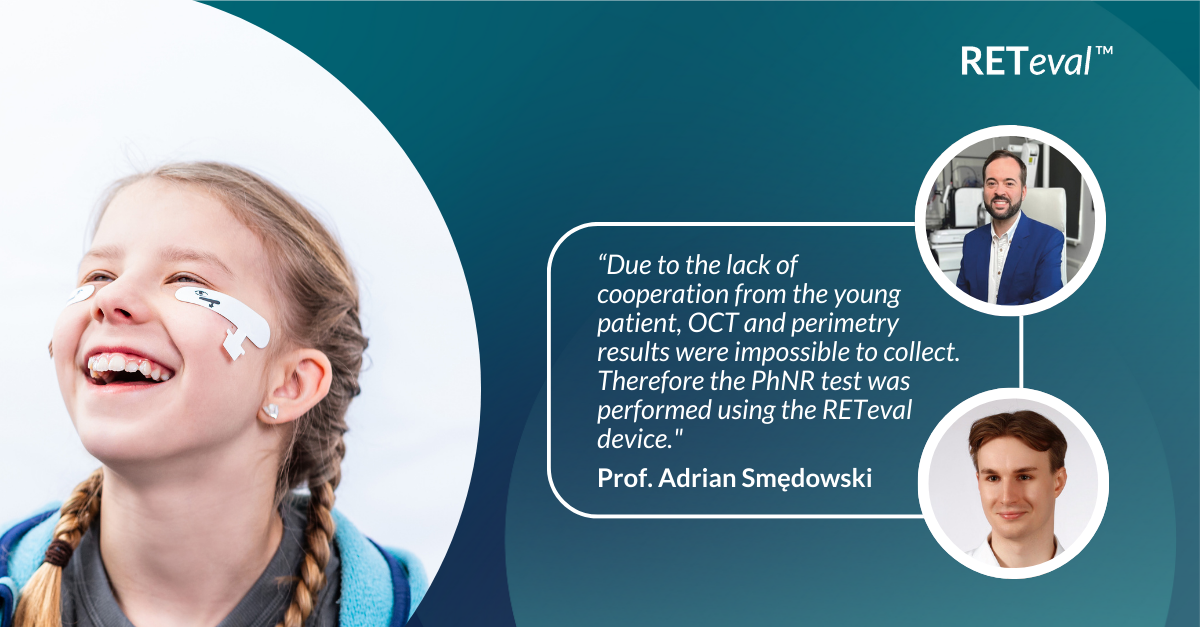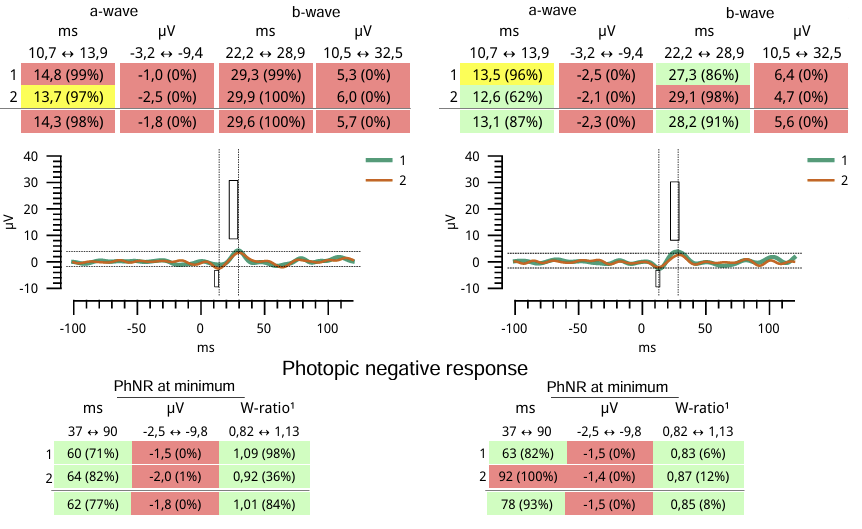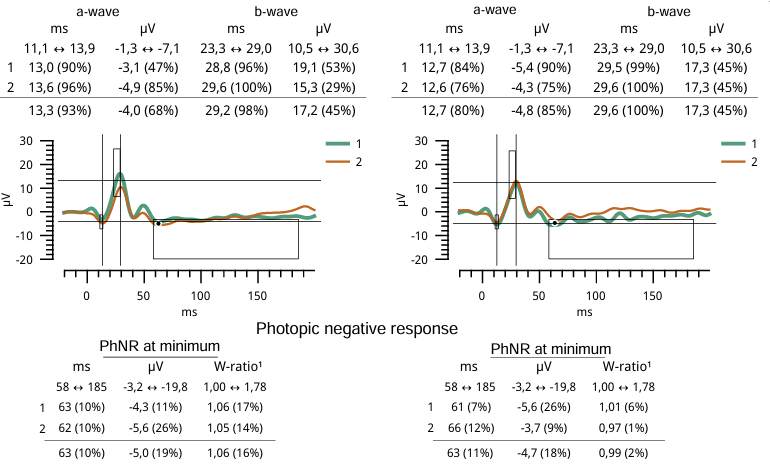Case study
Photopic Negative Response as a Reliable Method for Glaucoma Follow up in Children
by Dr. Bartłomiej Kocurek & Prof. Adrian Smędowski, Medical University of Silesia, Poland
A 7-year-old girl reported for an ophthalmological appointment with a glaucoma specialist. She has a history of congenital glaucoma and this appointment was post-trabeculectomy status. Her best corrected visual acuity (BCVA) was OD: 20/400, OS: 20/60 and her intraocular pressure measurement using the iCare device was OD: 20 mmHg and OS: 16 mmHg.

Why Was the ERG Test Performed?
During examination of the fundus photos, the doctor’s attention was drawn to a pale-pink optic disc with a tilted disc structure and pigment deficiency in the retina. Due to a lack of cooperation from the young patient, OCT and perimetry results were impossible to collect. Therefore, the photopic negative response (PhNR) test was performed using the RETeval® device from LKC Technologies.
What Were the ERG Findings?

Abnormal values of the PhNR wave amplitude at minimum value were recorded, OD: -1.8 uV, OS: -1.5 uV (Fig. 1) Moreover, the amplitude values of the a and b-waves were also diminished. As a result, the IOP lowering treatment was intensified by including topical 20 mg/ml Dorzolamide drops twice daily. Additionally, due to the impaired retinal conduction in the PhNR, a full-field flash electroretinogram (ERG) according to ISCEV test steps was recommended together with supplementation of Vitamin A.
How Did the ERG Impact the Next Steps?
After a year, all tests were repeated. BCVA improved to OD: 20/200, OS: 20/40. As a result of the treatment changes, her IOP decreased to OD: 11 mmHg, OS: 12 mmHg (iCare). Results of the PhNR test, demonstrate significantly improved amplitude with the following values OD: -5.0 uV, OS: -4.7 uV. (Figure 2). The a and b-wave also normalized. Studies have shown that a reduction in intraocular pressure (IOP) can improve retinal ganglion cell function, which may lead to better overall visual performance, including improved visual acuity.

Conclusion
The PhNR test could serve as an alternative to standard assessments such as perimetry or OCT when it’s impossible to perform these tests. In cases where young patients are unable to complete complex evaluations, access to simpler tests that require minimal participation will ensure they receive the appropriate treatment.

Dr. Bartłomiej Kocurek & Prof. Adrian Smędowski
Medical University of Silesia, Poland
Dr. Bartłomiej Kocurek was educated at the Medical University of Silesia. After completing his studies, he began work to understand ERG and its utility in managing glaucoma in collaboration with Professor Adrian Smędowski, MD, PhD, FEBO.
Dr. Smędowski is a Professor of Ophthalmology at the Medical University of Silesia in Katowice, Poland, where he serves as Acting Head of the Department of Pediatric Ophthalmology and Deputy Head of the Department of Ophthalmology. He is a Fellow of the European Board of Ophthalmology and a specialist in clinical ophthalmology. Prof. Smędowski earned his medical and doctoral degrees from the Medical University of Silesia and completed postdoctoral research at the University of Eastern Finland. His research focuses on neuroprotective gene therapies for glaucoma and protein interactions in retinal ciliopathies. He leads translational ophthalmology research and is CEO of GlaucoTech and founder of GlaucoMed.



